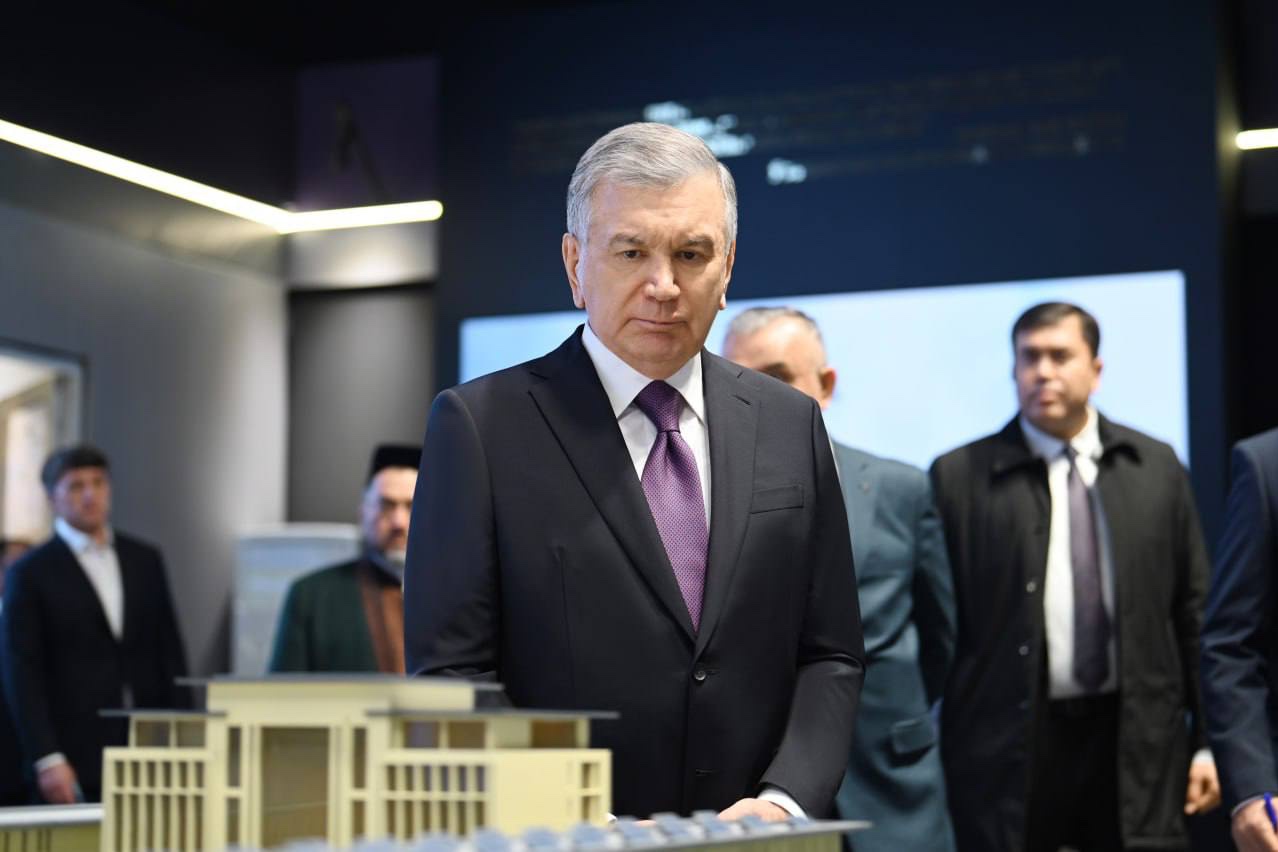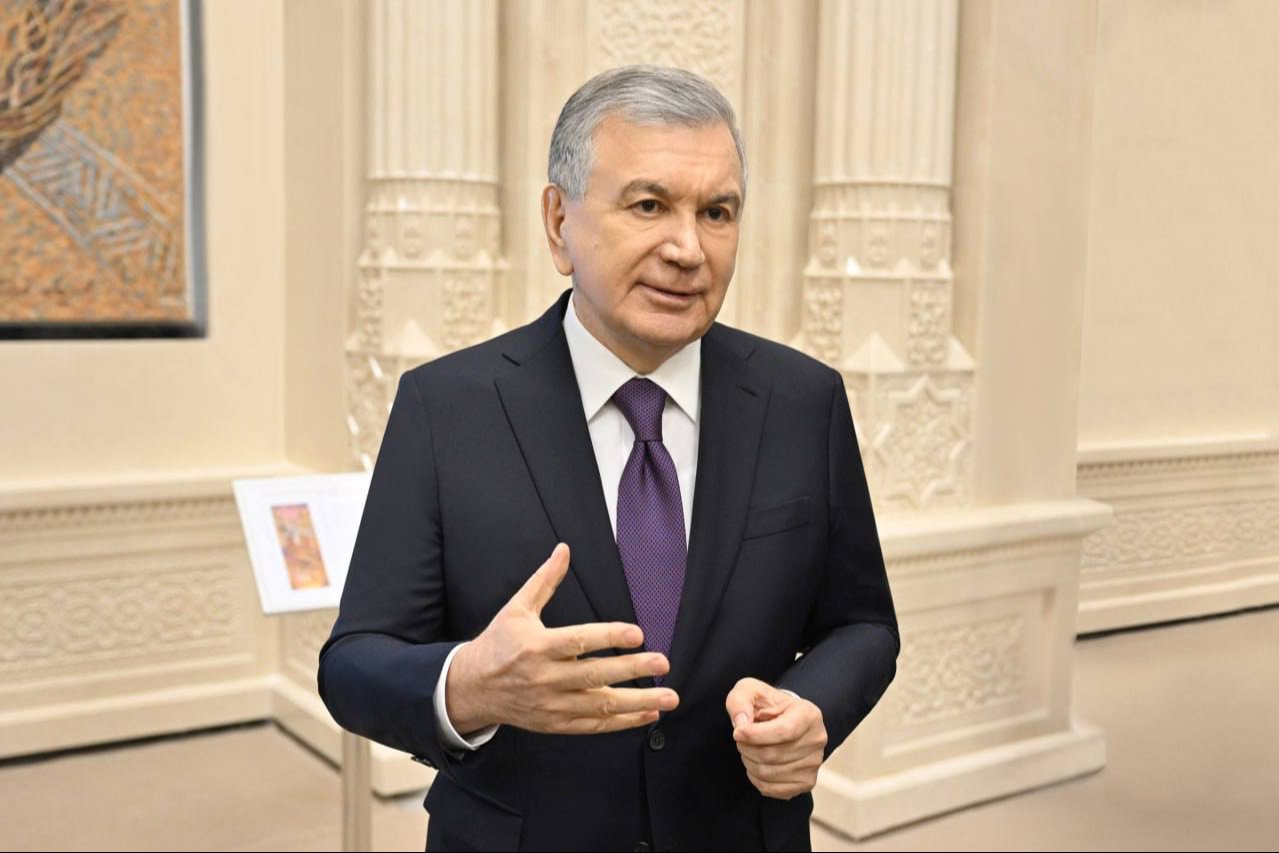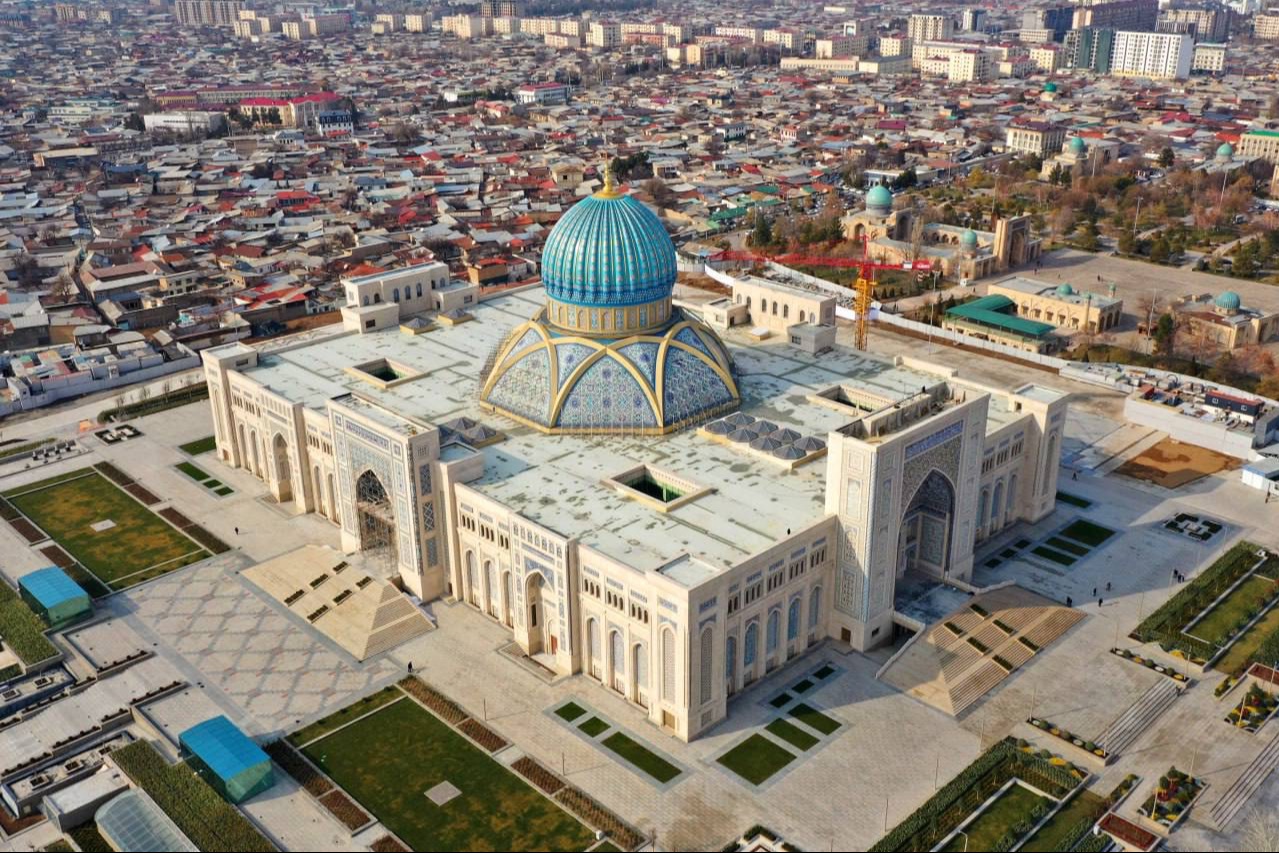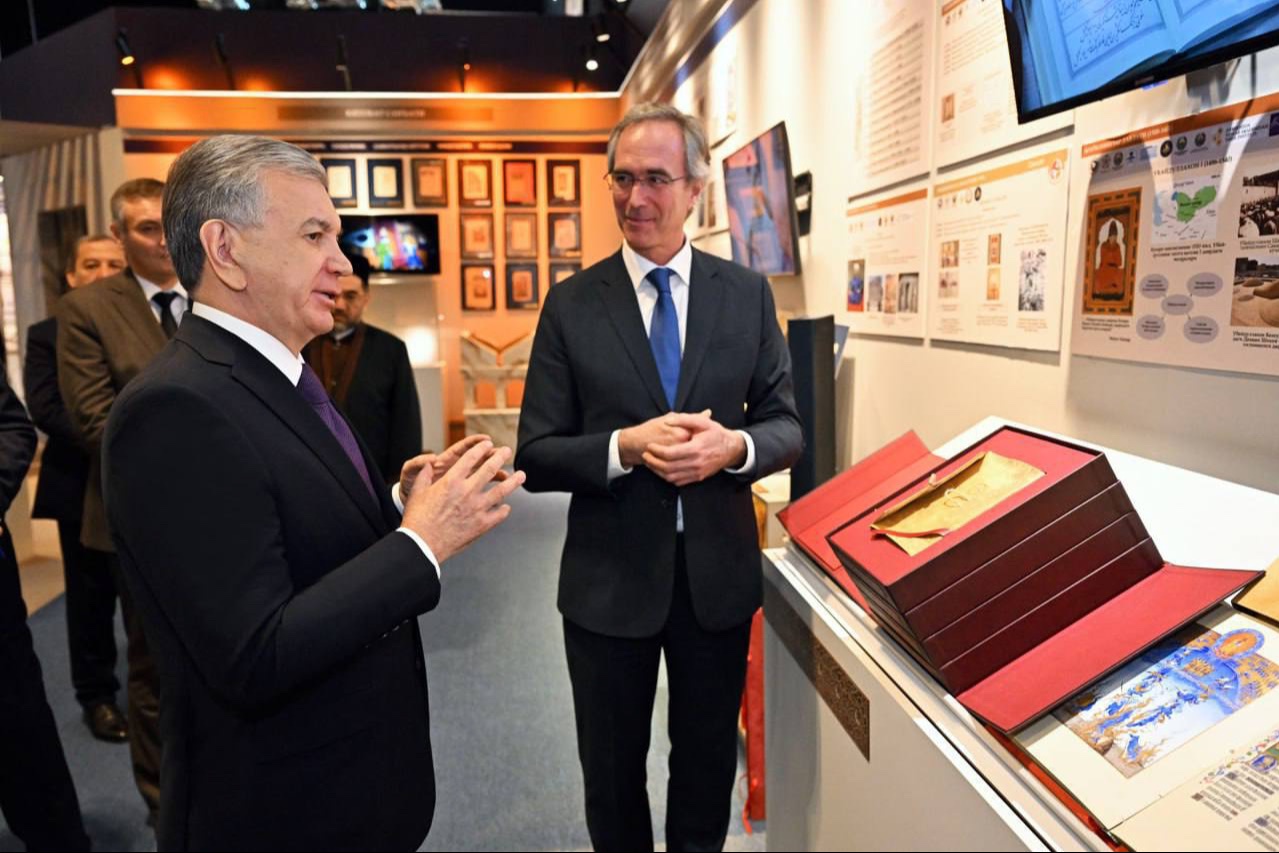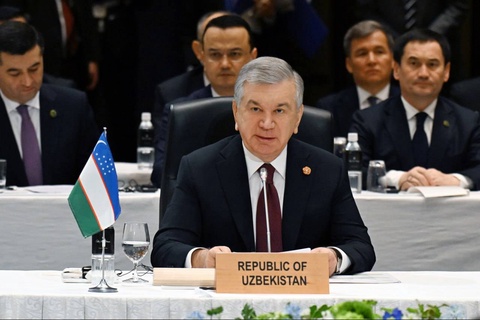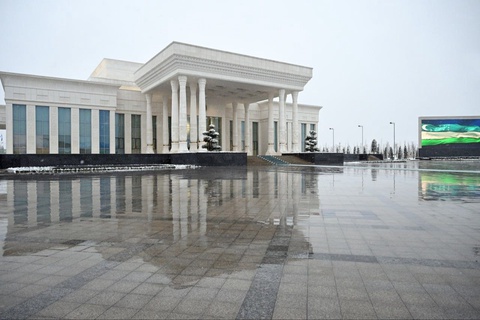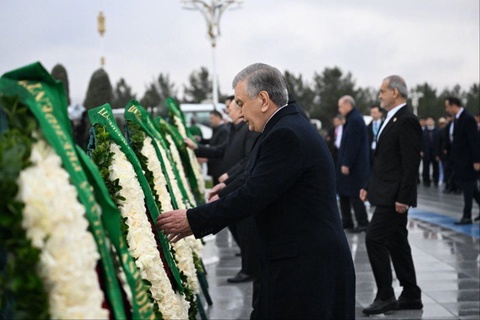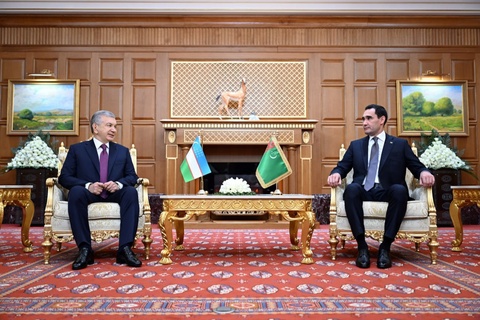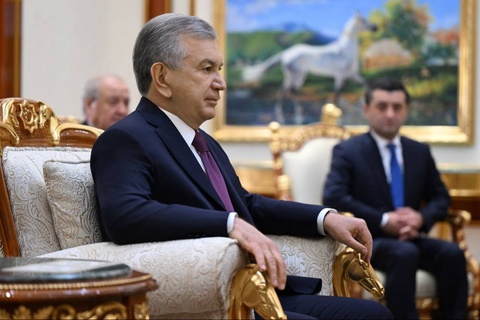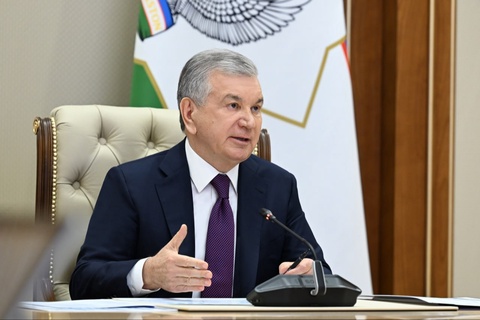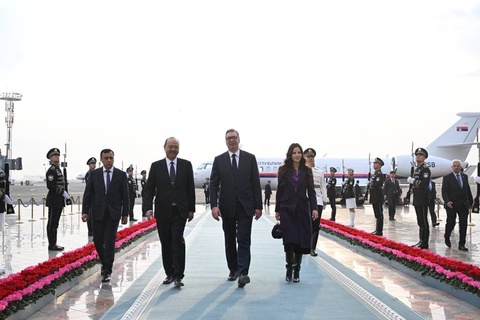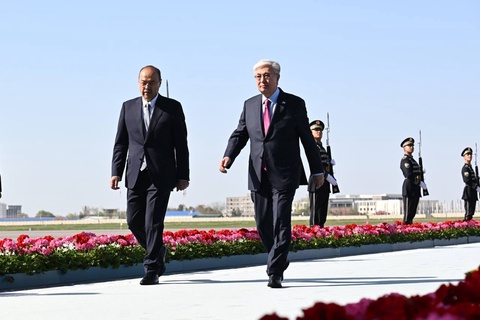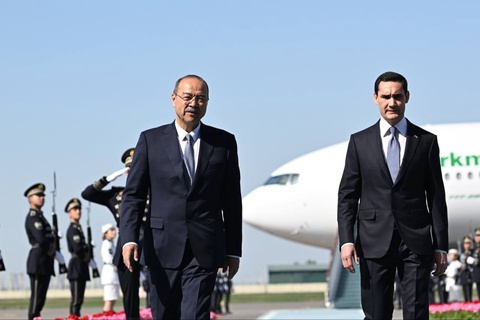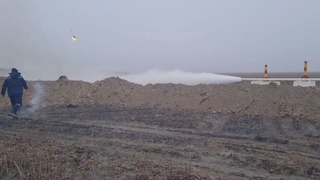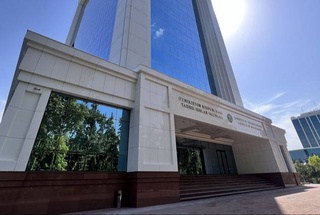This unique project has no equivalent in the history of the country. The majestic building has already been erected, and construction is in its final stage.
The center is being built in accordance with a Presidential Resolution issued on June 23, 2017. The President laid the foundation for this significant initiative on Ramadan Hayit (Eid al-Fitr) in 2018.
The majestic building of the center spans three floors and is designed in the style of ancient architectural monuments. Its traditional dome and facade and a unique blend of national ornaments lend it exceptional beauty and grandeur. The complex features four portals, each 34 meters high, while at its heart stands a central dome reaching 65 meters in height.
The Hall of the Quran will be the spiritual core of the center. It will house one of the most treasured relics of the Islamic world – the ancient Mushaf of Uthman. Additionally, the hall will showcase copies of the Quran created during the Samanid, Karakhanid, Khwarezmshah, Uzbek Khan, and Timurid dynasties, along with their translations into Old Uzbek and rare manuscripts of the Quran from around the world.
“Many books, ancient manuscripts, unique records, and works of art that are part of our rich and distinct heritage were scattered across different countries and remained unknown to us for a long time. Thanks to this center, we have made tremendous progress in studying history and discovering new sources. However, preserving them as relics of the past is not enough. We must integrate them into active scientific discourse, present them to our citizens – especially the youth – in an accessible format, and widely showcase them to the global community. This center should not only serve as a guardian of history but also as an intellectual space that connects the past, present, and future, shaping the key directions of our development”, Shavkat Mirziyoyev emphasized”.
The complex will feature sections dedicated to “Pre-Islamic Civilizations”, “The First Renaissance”, “The Second Renaissance”, “Uzbekistan in the 20th Century”, and “New Uzbekistan – A New Renaissance”. The President paid special attention to their scientific concept and the facilities provided.
The history of these periods is presented through various artifacts, handwritten sources, photographs, and multimedia technologies. Special emphasis is placed on the multifaceted contributions of scholars and thinkers such as Al-Khwarizmi, Al-Fergani, Al-Farabi, Al-Biruni, Ibn Sina, Mahmud Zamakhshari, Mirzo Ulugbek, Alisher Navoi, Ali Qushchi, and others. The significant contributions of outstanding Islamic scholars are also extensively highlighted, including Imam Bukhari, Imam Termizi, Hakim Termizi, Abu Mansur Maturidi, Abu Muin Nasafi, Kaffol Shashi, Abdulkhaliq Gijduvani, Najmiddin Kubro, Burhaniddin Marginoni, Bahauddin Naqshband, and Khoja Ahror Vali, all of whom played a key role in the development of Islamic enlightenment.
Additionally, a special section has been created to honor prominent women of the past, including Bibikhanum, Khonzodabegim, Gavharshodbegim, Gulbadan, Nodirabegim, Uvaysi, and Anbar Otin, who were patrons of science and the arts. This exhibition aims to serve as an inspiring example for modern young women.
The Head of state emphasized the significance and objectives of the center.
“Science, culture, education, and enlightenment have always been at the core of Islamic civilization and teachings. These very values form the foundation of the center we are building. Its primary goal is to bring together, in one place, the millennia-old heritage of Islamic culture connected to our country. Every visitor to this center will be able to witness the greatness of this history, realize that Islam is, above all, a religion of peace, progress, and tolerance, and gain a deeper understanding of the outstanding contributions of the Uzbek people to world civilization”, the President stated.
In this regard, it was stressed that the legacy of great ancestors must be deeply studied and transformed into a living force capable of addressing contemporary challenges. The importance of scientific and methodological coordination was highlighted, particularly in the activities of the International Islamic Academy of Uzbekistan and research centers named after Imam Bukhari, Imam Termizi, Imam Maturidi, and other scientific and educational institutions. Through joint efforts, it is necessary to develop scholarly responses to pressing challenges and counter ignorance through education and enlightenment.
“In the future, this center will become a symbol of our architectural school, as well as the scientific and spiritual potential of New Uzbekistan. Each section must carry profound meaning and reflect this mission. Cooperation has already been established with leading international museums, libraries, and renowned experts, and scientific works and books are being published. However, this work must remain systematic and scientifically grounded. Our main goal is to understand and promote our national identity”, the Head of state emphasized.
The center collaborates with leading international scientific organizations, including UNESCO and ICESCO. In August 2024, the 8th International Congress on “The Heritage of Great Ancestors – The Foundation of the Third Renaissance” was held in Tashkent and Samarkand, bringing together around 200 scholars from 35 countries. During the event, valuable proposals were put forward regarding the further development of the center.
After reviewing the progress of construction and the concept of the future exhibition, the President gave specific instructions regarding the organization of the center’s activities, its content development, and further improvements.
The Head of state also reviewed a presentation on developing the capital’s tourism potential.
Currently, numerous large-scale tourism projects are being implemented across various districts of Tashkent. In Bektemir, Mirzo Ulugbek, Mirabad, Yunusabad, Yakkasaroy, and Yangihayot districts, dozens of 24/7 tourism facilities are being developed.
The Old City of Tashkent holds great historical significance and attracts foreign tourists year-round. In this regard, it is being actively developed as a specialized tourism cluster. Notably, a thematic tourist street was established in Gulbozor mahalla, located near Chorsu Bazaar last year. Large-scale efforts are also underway to renovate the Abdulla Qodiri Culture and Recreation Park.
In Almazar district, plans are being made to create gastronomic and tourist streets. As part of this project, 17 streets and 32 alleyways have been selected, where new tourist infrastructure will be introduced while preserving the unique architectural heritage of the Old City.
These transformations are expected to lead to an increase of 250 new entrepreneurs in the district and the creation of 1,500 new jobs. Most importantly, the daily tourist flow will grow from 4,000 to 11,000 visitors.
The President instructed officials to take additional measures to expand opportunities for entrepreneurs and artisans and organize new tourist routes to make travel experiences in the capital more dynamic and engaging.


